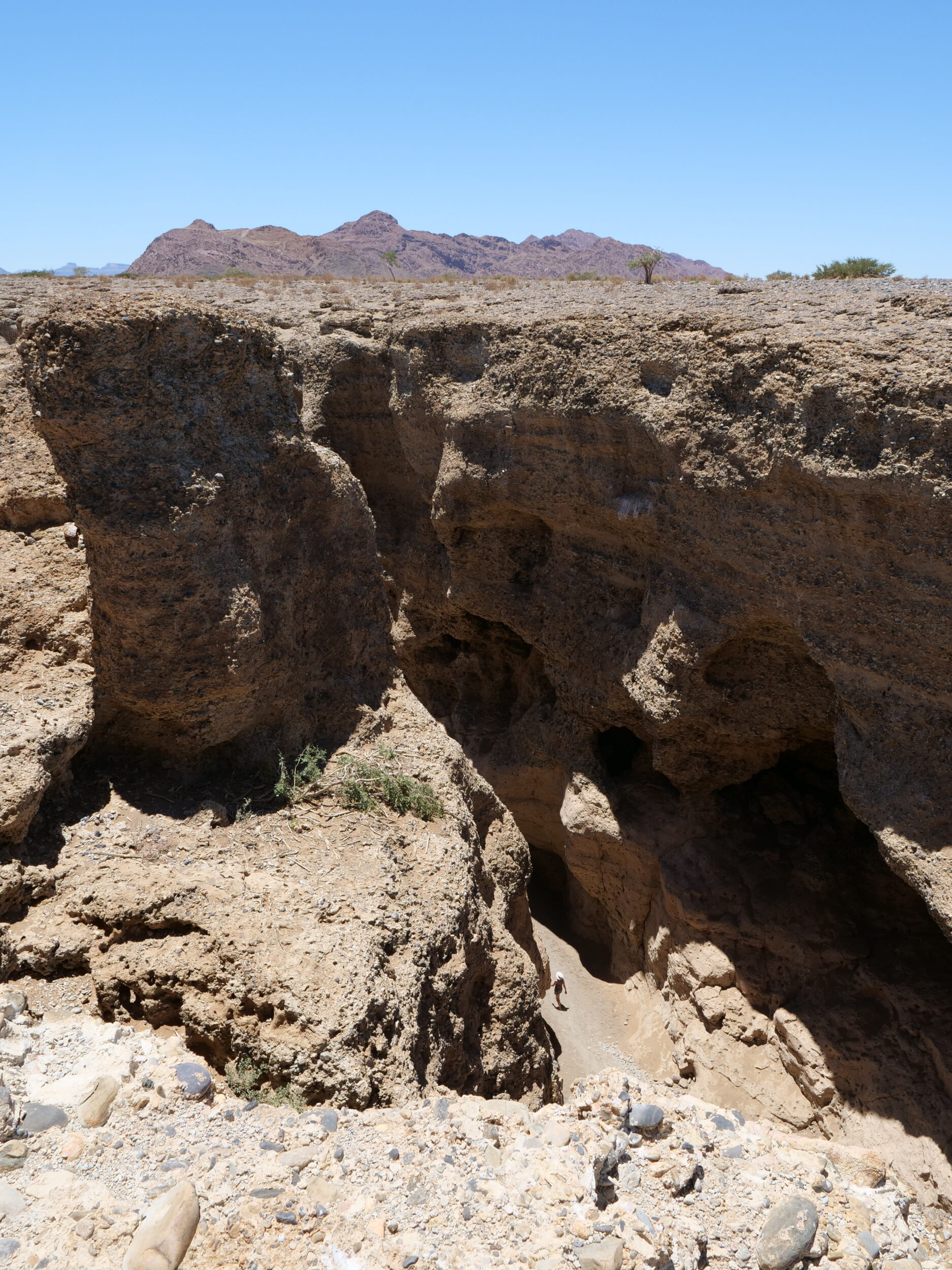Whether or not you are taking photographs – and wherever you happen to be – it is always worthwhile, often, to change your field of view from narrow to wide, and to shift your focus from somewhere/something near to somewhere/something distant…and vice-versa.
Doing so will help your eyes to work better, for longer…and you will enjoy many wonderful sights that you would have missed, had your focus and field of view remained “fixed”.
(it is also a good idea – most especially if you enjoy wildlife encounters – to turn around and look behind you, frequently …but “turning around” is not this series’ concern)
The series begins in the Namib, the world’s oldest desert…
The featured image looks into and over Sesriem Canyon.
It is just a few kilometres of rough road distant from the gate which grants entrance to the sealed road that gives tourists easy access to Namibia’s greatest “tourist magnet”.
Sossusvlei’s dunes are oft-billed – falsely – as the world’s biggest.
However, they may well be the world’s loveliest…and for most who reach them, they will be much the biggest and most amazing dunes that those people will ever experience.
Sesriem’s canyon is not as “gobsmacking”, but is remarkable in its own right, and is easy to visit, immediately after an unforgettable early morning at Sossusvlei.
Click here to see more, to learn how the canyon was formed, to read the story behind its strange name (which translates into English as “six straps”) and to understand its enduring importance to local wildlife.
In this series, each successive headline-numeral has an “A” post and a “B” post.
”A” presents a “landscape” view of a particular place or subject, whilst “B” offers a much closer view…of something present, within.
I can almost guarantee that some of the “B” images will surprise you.
